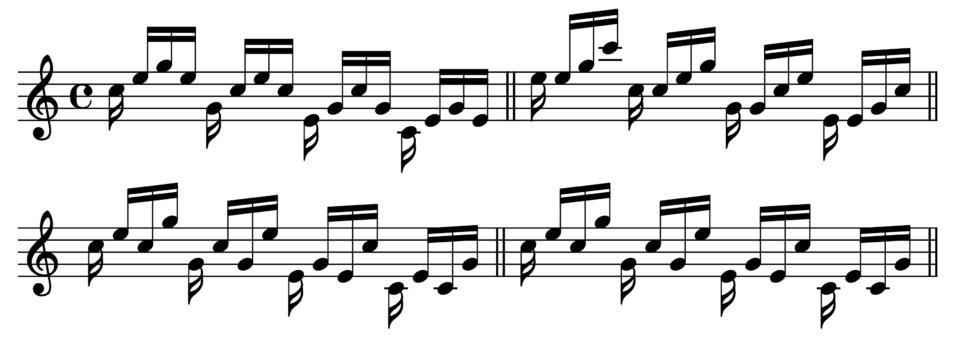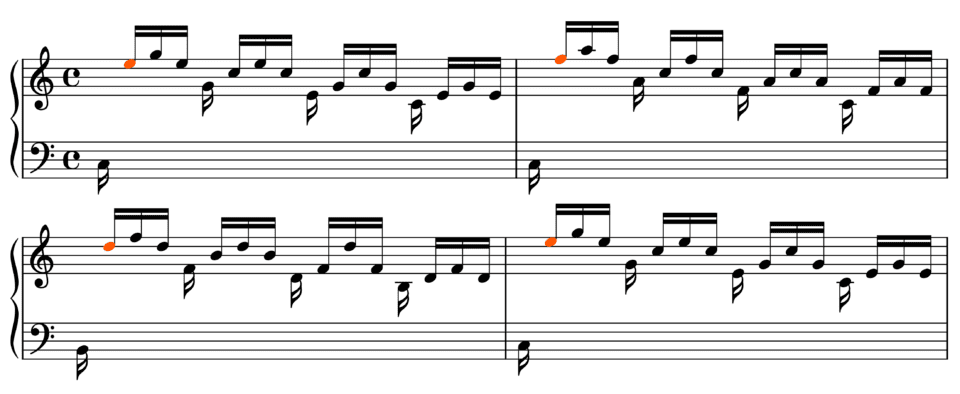One of the biggest problems when we want to compose our own music is that often we don’t know how to transform what we have in mind, what we hear in our heads into notes, written or improvised!
In this guide, you will learn to use the Broken Chords tool, as effective as it is simple to use, to give a much spicier taste to your compositions!
Broken Chords
Harmony: which chords to use?
The Broken Chords tool is particularly easy to use because it can be applied to practically any type of Moti di Basso (bass movement) we can find.
Broken Chords only needs one chord to be applied, as I will show you shortly.
However, the advice I give you is to have a clear idea in mind of the bass progression with the harmony you will build on top.
This is important because with Broken Chords, you will have to manage other aspects besides harmony, such as rhythm, technique, and melody.

Rhythm: is there a more effective rhythm?
Now that you know that the Broken Chords tool only needs one chord, the question I pose to you is: how to do it?
Well, the answer is very simple: you have to choose a rhythm that you will repeat over and over again on your keyboard, following the harmonic progression you have chosen previously.
I will show you shortly in a video the most effective rhythmic combinations.

Rhythm: is there a more effective rhythm?
If I talk to you about “Chord,” the first thing you think of is three notes positioned one above the other, or three keys played simultaneously on the keyboard.
The first image that comes to mind, in fact, concerns the vertical dimension of the Composition.
At the same time, it is absolutely wrong to consider the vertical dimension as the only dimension present in chords!
In a succession of chords, it is also possible to bring out a very precise and particular melodic sequence!
Indeed, sometimes it is fundamental because it is precisely by doing so that you will be able to combine the grace and delicate character of the chords with the majesty and elegance of a well-balanced melody!

An Example of Broken Chords
Sure, transitioning from words to action is anything but simple!
For this reason, I have prepared a video for you in which I guide you step by step to apply the Broken Chords tool in your improvisations and compositions.
How to Use Broken Chords?
- The figure you choose: the more jagged it is, the spicier the effect will be.
- The speed at which you play: if you play fast, you will have a more energetic character.
- The touch with which you play the keys: particularly the piano/forte dynamics and the staccato/legato articulation.
Video to Learn How to Use Broken Chords
Showing here how you can apply these tools in a written text would lose all effectiveness and beauty…
For this reason, I have prepared this video for you, in which I explain and guide you step by step on how to do it.
So, grab your keyboard, paper, and pen, and then take advantage of the Further Resources I have created for you.
Become even better! Further Resources to Improve!
- Practice with the Worksheet that I show you in the video, where you will find all the rhythmic combinations and instructions on the bass and chords to practice with!
You can download it HERE. - Don’t let your lack of harmony limit you!
Start your composition journey with The Partimento Method. - If you feel lost and don’t know where to start, I can personally guide you with 1-to-1 sessions! Discover my services for you HERE.






